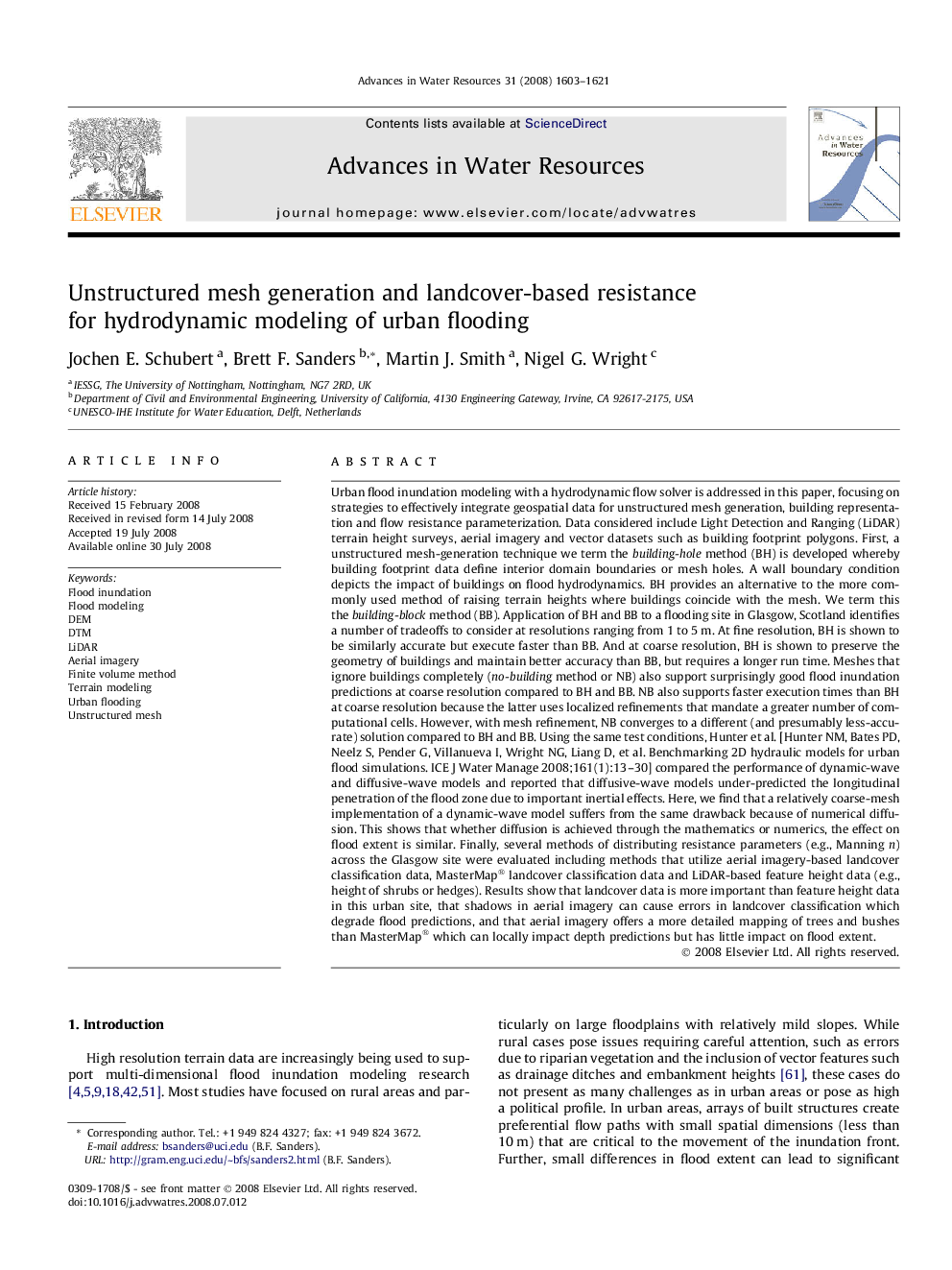| Article ID | Journal | Published Year | Pages | File Type |
|---|---|---|---|---|
| 4526461 | Advances in Water Resources | 2008 | 19 Pages |
Urban flood inundation modeling with a hydrodynamic flow solver is addressed in this paper, focusing on strategies to effectively integrate geospatial data for unstructured mesh generation, building representation and flow resistance parameterization. Data considered include Light Detection and Ranging (LiDAR) terrain height surveys, aerial imagery and vector datasets such as building footprint polygons. First, a unstructured mesh-generation technique we term the building-hole method (BH) is developed whereby building footprint data define interior domain boundaries or mesh holes. A wall boundary condition depicts the impact of buildings on flood hydrodynamics. BH provides an alternative to the more commonly used method of raising terrain heights where buildings coincide with the mesh. We term this the building-block method (BB). Application of BH and BB to a flooding site in Glasgow, Scotland identifies a number of tradeoffs to consider at resolutions ranging from 1 to 5 m. At fine resolution, BH is shown to be similarly accurate but execute faster than BB. And at coarse resolution, BH is shown to preserve the geometry of buildings and maintain better accuracy than BB, but requires a longer run time. Meshes that ignore buildings completely (no-building method or NB) also support surprisingly good flood inundation predictions at coarse resolution compared to BH and BB. NB also supports faster execution times than BH at coarse resolution because the latter uses localized refinements that mandate a greater number of computational cells. However, with mesh refinement, NB converges to a different (and presumably less-accurate) solution compared to BH and BB. Using the same test conditions, Hunter et al. [Hunter NM, Bates PD, Neelz S, Pender G, Villanueva I, Wright NG, Liang D, et al. Benchmarking 2D hydraulic models for urban flood simulations. ICE J Water Manage 2008;161(1):13–30] compared the performance of dynamic-wave and diffusive-wave models and reported that diffusive-wave models under-predicted the longitudinal penetration of the flood zone due to important inertial effects. Here, we find that a relatively coarse-mesh implementation of a dynamic-wave model suffers from the same drawback because of numerical diffusion. This shows that whether diffusion is achieved through the mathematics or numerics, the effect on flood extent is similar. Finally, several methods of distributing resistance parameters (e.g., Manning n) across the Glasgow site were evaluated including methods that utilize aerial imagery-based landcover classification data, MasterMap® landcover classification data and LiDAR-based feature height data (e.g., height of shrubs or hedges). Results show that landcover data is more important than feature height data in this urban site, that shadows in aerial imagery can cause errors in landcover classification which degrade flood predictions, and that aerial imagery offers a more detailed mapping of trees and bushes than MasterMap® which can locally impact depth predictions but has little impact on flood extent.
